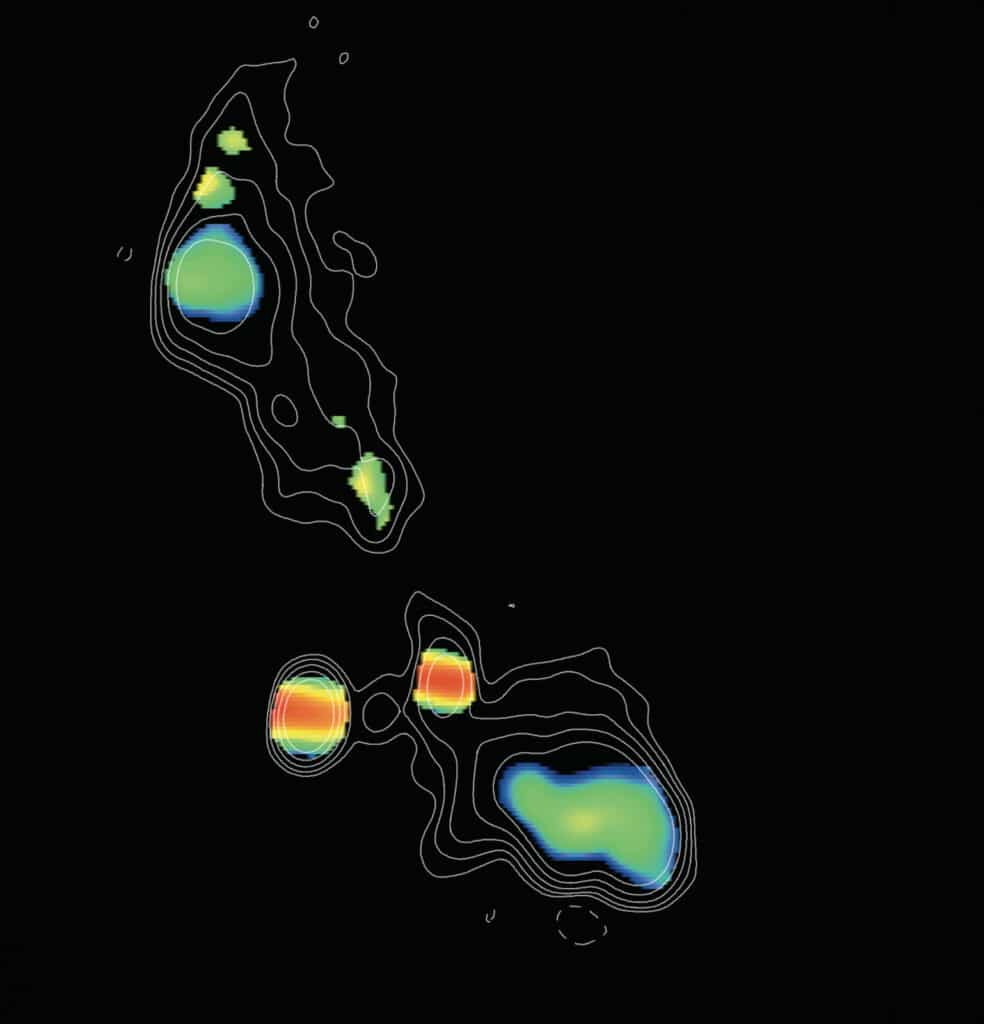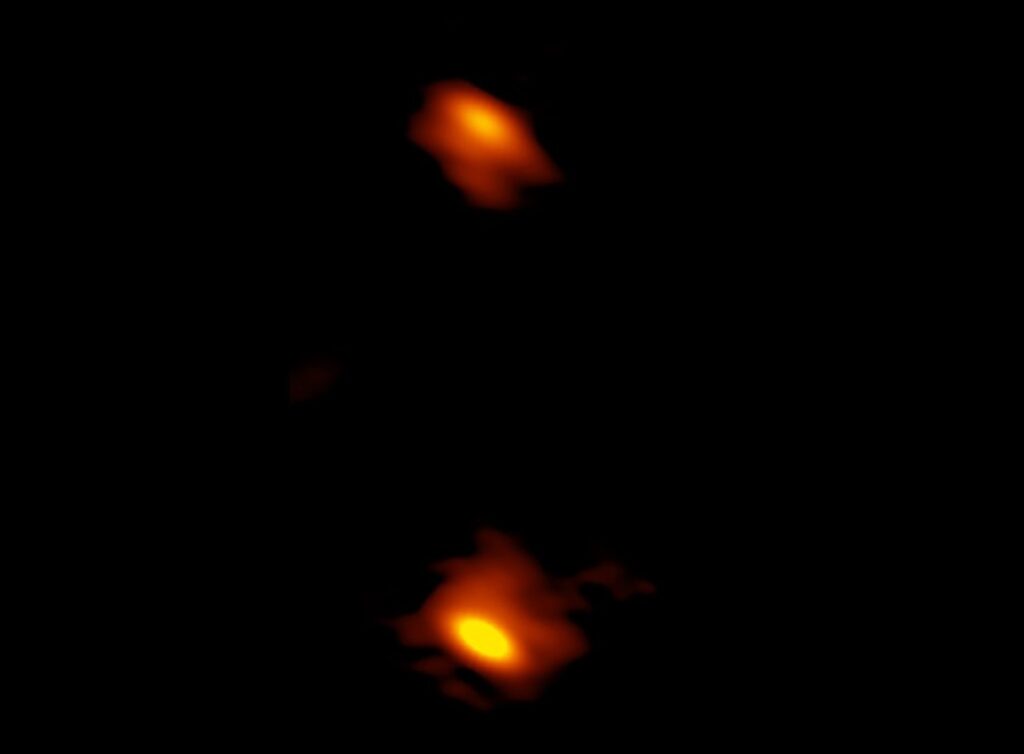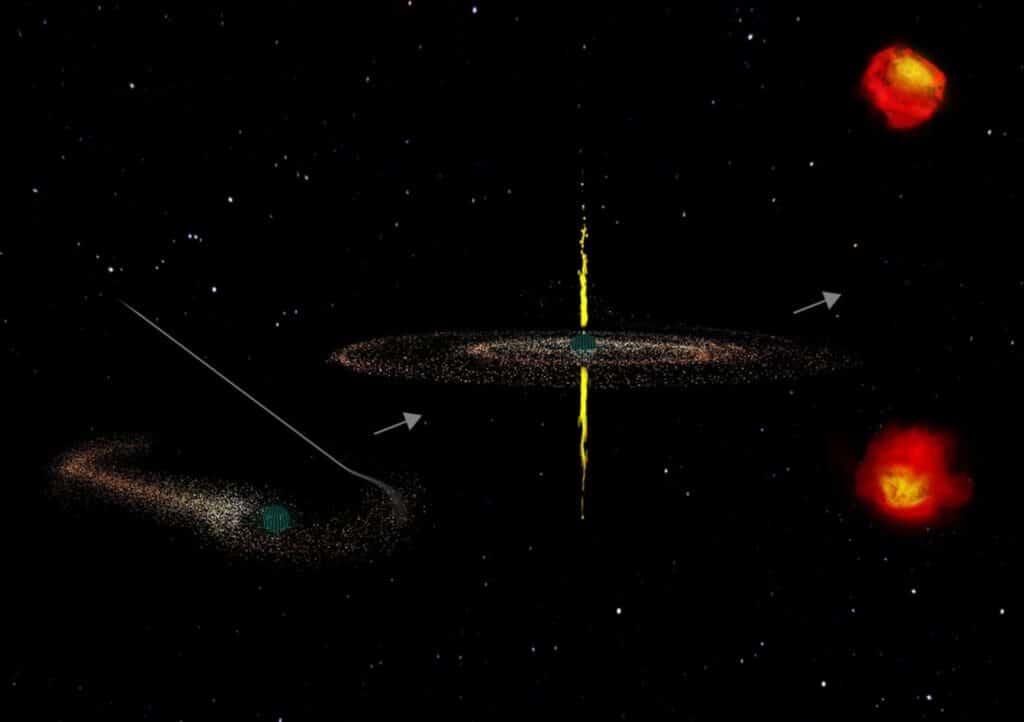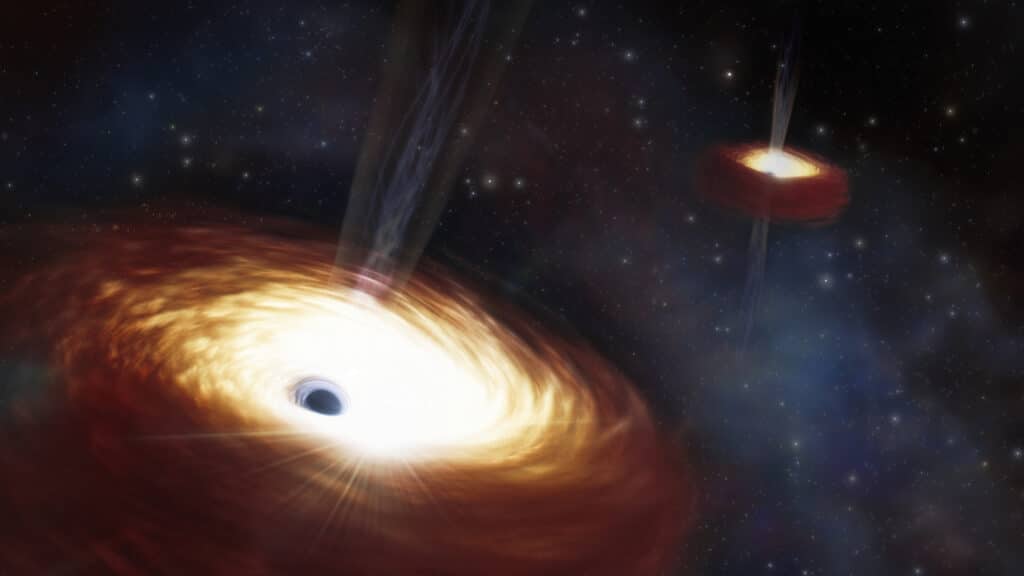When we gaze up at the night sky, it’s easy to imagine that the countless stars and galaxies have been around forever, living out their cosmic lives over millions or even billions of years. But a new study, comprised of three separate papers published in The Astrophysical Journal and led by researchers at California Institute of Technology (Caltech), reveals a class of galaxies that buck this trend, living fast and dying young on a cosmic timescale.
These galaxies, known as Compact Symmetric Objects or CSOs, are a bit of an oddball in the galactic family. Like many galaxies, they have supermassive black holes at their cores, but what sets them apart is the two powerful jets of material that blast out from these black holes in opposite directions at nearly the speed of light.

For decades, astronomers thought that CSOs were simply young versions of their larger, more extended cousins.
“These CSOs are not young,” says lead investigator Anthony (Tony) Readhead, the Robinson Professor of Astronomy, Emeritus, at Caltech, in a media release. “You wouldn’t call a 12-year-old dog young even though it has lived a shorter life than an adult human. These objects are a distinct species all of their own that live and die out in thousands of years rather than the millions of years that are common in galaxies with bigger jets.”
To come to this conclusion, astronomers reviewed literature and past observations of over 3,000 potential CSOs, narrowing the field down to just 79 confirmed objects. These galaxies had been previously observed by some of the most powerful radio telescopes in the world, including the Very Long Baseline Array (VLBA) funded by the National Science Foundation (NSF).
“The VLBA observations are the most detailed in astronomy, providing images with details equivalent to measuring the width of a human hair at a distance of 100 miles,” explains Readhead.

This incredible resolution allowed the team to study the CSOs in unprecedented detail.
What they found was surprising. Unlike their larger cousins, which can have jets extending hundreds of thousands of light-years into space and can persist for millions of years, CSOs have jets that reach out to a maximum of about 1,500 light-years and shut off after just 5,000 years or less.
“The CSO jets are very energetic jets but they seem to shut off,” says study co-author Vikram Ravi, assistant professor of astronomy at Caltech. “The jets stop flowing from the source.”
So what causes these short-lived but powerful jets? Researchers believe the answer lies in a dramatic cosmic event known as a tidal disruption event (TDE). This occurs when a star wanders too close to a supermassive black hole and is literally torn apart by the black hole’s immense gravitational pull.
“We think that a single star gets ripped apart, and then all that energy is channeled into jets along the axis the black hole is spinning around,” notes Readhead. “The giant black hole starts out invisible to us, and then when it consumes a star, boom! The black hole has fuel, and we can see it.”
But not just any star will do. According to the astronomers, the CSO jets likely form when a supermassive black hole devours a particularly substantial star.
“The TDEs we’ve previously seen only lasted for a few years,” says Ravi. “We think that the remarkable TDEs powering CSOs last far longer because the disrupted stars are very large in size, very massive, or both.”
By studying the radio images of these CSOs at different stages, researchers have been able to trace how these objects evolve over time, almost like flipping through a photo album of a CSO’s life. Younger CSOs have shorter jets closer to the black hole, while older ones have jets that extend further out.

While most of these jets die out, scientists estimate that about one in 100 will continue on to become long-lived like those seen in other galaxies. In these rare cases, galaxies are likely in the process of merging with other galaxies, a turbulent event that provides a large amount of additional fuel.
“These objects are indeed a distinct population with their own distinct origin, and it is up to us now to learn more about them and how they came to be,” concludes Readhead. “Being able to study these objects on timescales of years to decades rather than millions of years has opened the door to a whole new laboratory for studying supermassive black holes and the many unexpected and unpredictable surprises they hold.”












